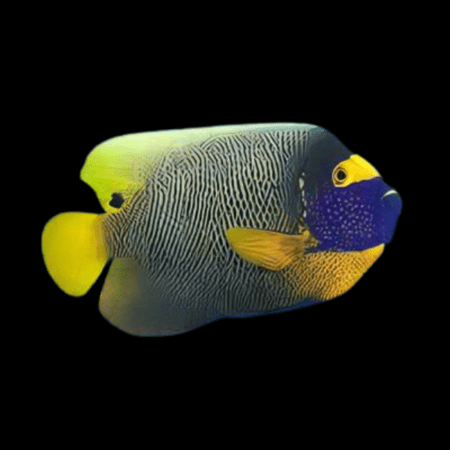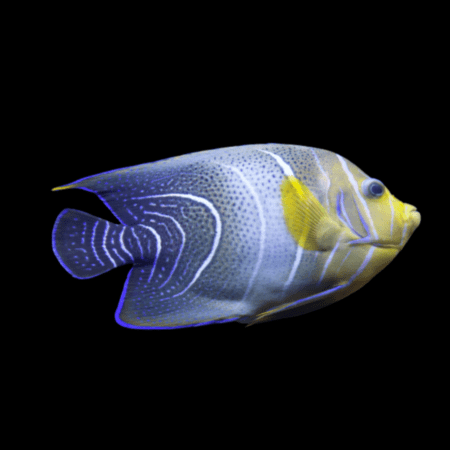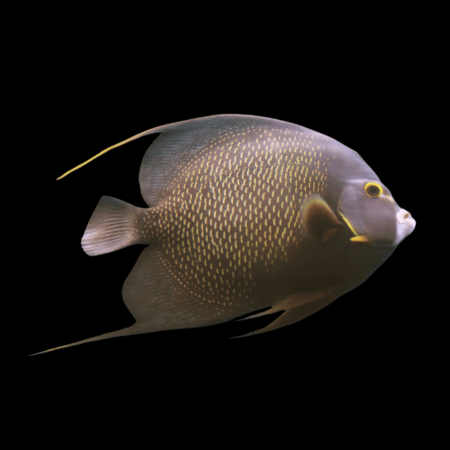Description
Rock Beauty Angelfish Holacanthus Tricolor
The Rock Beauty Angelfish is a vibrant marine spectacle, showcasing a striking contrast of a deep yellow body and a bold, black spot covering the head and extending to the mid-section. This small to medium-sized angelfish reaches up to 8 inches in length, making it a mesmerizing addition to many saltwater aquariums.
Origin
Native to the warm waters of the Western Atlantic, from Bermuda and the northern Gulf of Mexico to Brazil, the Rock Beauty Angelfish thrives in reef environments. It is often found amidst coral and rocky substrates where it can graze and take refuge.
Feeding
Rock Beauty Angelfish have a specialized diet that predominantly consists of sponges and marine algae. In an aquarium setting, they require a varied diet that includes quality angelfish preparations, spirulina, mysis shrimp, and other foods rich in marine algae. Regular feeding of sponge-containing formulas is crucial for their well-being.
Tank Mates
Selecting tank mates for the Rock Beauty Angelfish requires careful consideration. They are best housed with fish that are not overly aggressive or too passive. Suitable companions include larger damselfish, tangs, and some types of wrasses. It is advisable to introduce the Rock Beauty last to the aquarium to minimize territorial disputes.
Aggression
The Rock Beauty Angelfish exhibits a moderate level of aggression, particularly towards its own kind or similarly shaped fish. Providing ample space and hiding spots can help mitigate aggressive behaviors. A well-structured environment with plenty of live rock is beneficial.
Experience Level
Caring for a Rock Beauty Angelfish is considered moderately challenging, making it more suitable for aquarists with some experience. Successfully maintaining this species requires attention to diet, tank conditions, and compatibility with tank mates.
Water Parameters
- Temperature: 72°F to 82°F (22°C to 28°C)
- pH: 8.1 to 8.4
- Salinity: 1.020 to 1.025 sg
- Alkalinity: 8 – 12 dKH
Rock Beauty Angelfish thrive in stable water conditions with excellent water quality. Regular water changes and monitoring are essential to maintain the desired parameters.





Reviews
There are no reviews yet.